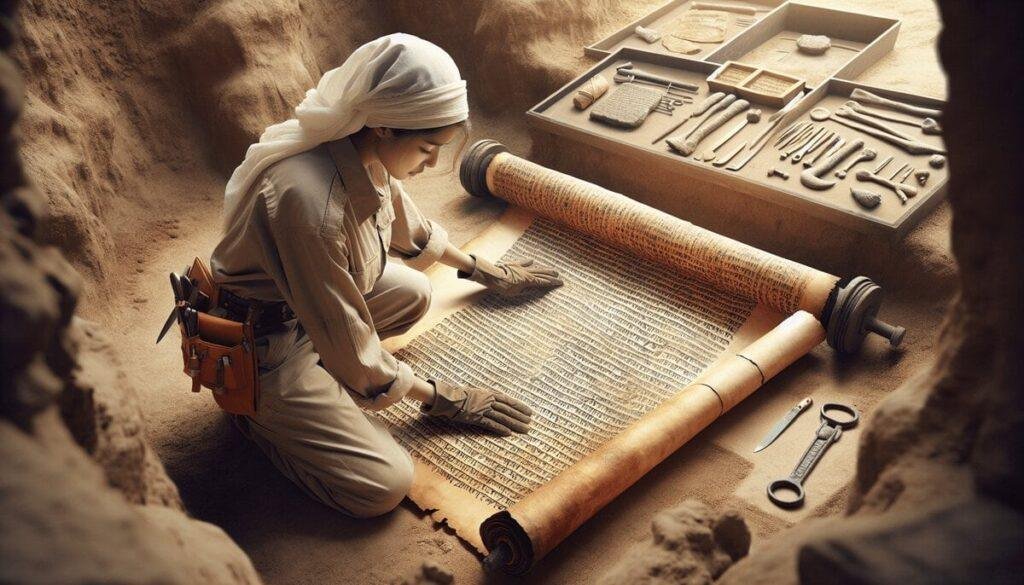Understanding Biblical Archaeology
At its core, Biblical Archaeology examines the archaeological sites, artifacts, and inscriptions that relate to the narratives found in the Bible. It aims to bridge the gap between the ancient texts and the physical evidence left behind by the people and events described in those texts.
The Significance of Archaeological Finds
Archaeological discoveries have played a pivotal role in confirming the historical accuracy of numerous biblical stories and figures. From the ruins of Jericho’s walls to the Pool of Bethesda, each find contributes to our understanding of the biblical world.
Challenges and Controversies
Despite its contributions, Biblical Archaeology is not without its controversies. Debates often arise regarding the interpretation of findings and their relevance to biblical accounts. These discussions are vital, as they encourage continuous scholarly examination and dialogue.
Key Discoveries in Biblical Archaeology
Several key discoveries have significantly impacted our understanding of the Bible’s historical context. These include the Dead Sea Scrolls, which offer insights into Jewish religious life before and during the time of Jesus, and the Tel Dan Stele, which provides evidence of King David’s existence.
Methods and Technologies
Modern archaeological methods and technologies, such as satellite imagery and ground-penetrating radar, have revolutionized the field, allowing archaeologists to locate and excavate sites with greater precision than ever before.
The Future of Biblical Archaeology
As technologies advance and discoveries are made, the field of Biblical Archaeology continues to evolve. Each new finding adds a piece to the puzzle of our understanding of the biblical past, offering fresh perspectives on ancient texts.
Conclusion
Biblical Archaeology provides invaluable insights into the historical context of the Bible. By carefully examining archaeological evidence, we can gain a deeper appreciation for the rich tapestry of history surrounding biblical narratives.
Interdisciplinary Approaches to Biblical Archaeology
The field of Biblical Archaeology greatly benefits from interdisciplinary collaboration, incorporating insights from anthropology, linguistics, and even molecular biology to paint a more comprehensive picture of the ancient Near East. For instance, analyzing pollen grains in sediment layers helps reconstruct ancient climates and agricultural practices, offering clues about the environmental conditions mentioned in the Bible, such as the seven years of famine in Egypt described in the Book of Genesis.
Preserving Heritage and Educating Future Generations
As important as it is to discover and analyze ancient artifacts, the preservation of these items and sites is equally crucial. Conservation efforts ensure that future generations can study and appreciate these tangible links to biblical times. Moreover, educational programs and digital archives make this knowledge accessible worldwide, allowing people from all walks of life to explore the historical backdrop of the Bible.
Global Interest and Community Engagement
Biblical Archaeology captures the imagination of people around the globe, transcending academic and religious communities. Public lectures, exhibitions, and online forums engage a diverse audience, sparking conversations about the historical realities behind religious traditions. This widespread interest underscores the universal appeal of exploring our past and understanding the origins of stories that have influenced countless cultures and societies.
Conclusion: A Journey Through Time
The journey of Biblical Archaeology is an ongoing adventure that continually challenges and expands our understanding of the past. With each shovel of earth turned, we uncover not just artifacts and ruins, but stories—stories that have shaped human history and continue to inspire today. As we piece together these fragments of the past, we bridge the gap between ancient texts and the modern world, fostering a deeper appreciation for the rich tapestry of human history woven through the pages of the Bible.
Academic Collaborations and Cross-Disciplinary Research
The field of Biblical Archaeology has increasingly embraced cross-disciplinary research, fostering collaborations across academic fields such as anthropology, history, religious studies, and even genetics. These partnerships have enriched our understanding of the ancient world, offering nuanced insights into the peoples, cultures, and environments of the biblical era. For example, genetic studies of ancient remains have provided a new understanding of the migrations and interactions of peoples in the Near East, adding layers of depth to our understanding of biblical narratives.
Public Interest and Accessibility
The allure of uncovering the world of the Bible has captivated the public imagination, leading to a proliferation of documentaries, exhibitions, and educational programs dedicated to Biblical Archaeology. This surge in public interest has underscored the importance of making archaeological findings accessible to a broader audience. Museums and virtual platforms play a crucial role in this endeavor, using interactive displays and digital storytelling to bring ancient artifacts and sites to life for people around the world.
Challenges in Preservation and Cultural Heritage
As the field advances, the challenges of preserving archaeological sites and artifacts become increasingly complex. Issues such as looting, environmental degradation, and political conflicts pose significant risks to cultural heritage. In response, archaeologists and conservationists are employing innovative solutions, from satellite monitoring to community-based conservation efforts, to protect these invaluable windows into the past.
The Role of Archaeology in Interfaith Dialogue
Biblical Archaeology also plays a pivotal role in interfaith dialogue, offering a common ground for exploring the historical roots of Judaism, Christianity, and Islam. By uncovering the material culture of the ancient Near East, archaeology provides a tangible connection to the shared stories and traditions that shape these faiths. This shared heritage can serve as a foundation for understanding and respect among diverse religious communities.
Conclusion: Looking to the Future
As we look to the future, the field of Biblical Archaeology continues to evolve, driven by technological innovations, academic curiosity, and a deepening appreciation for the complexity of the ancient world. The ongoing quest to understand the historical context of the Bible not only enriches our knowledge of the past but also offers insights into the human condition and the timeless narratives that continue to inspire and guide us. In this way, Biblical Archaeology remains not just a journey into history, but a bridge connecting past, present, and future.


